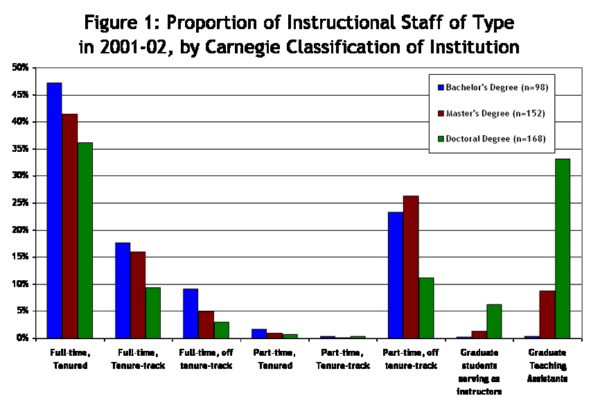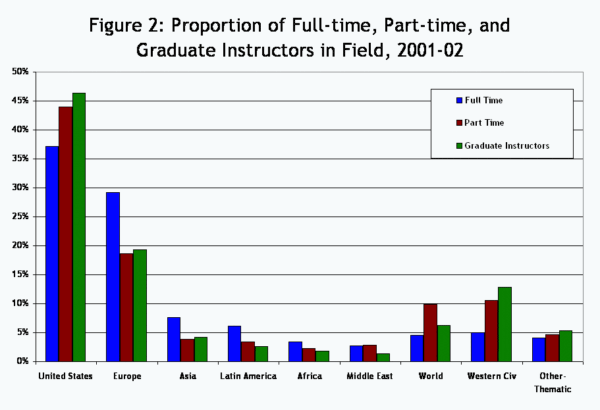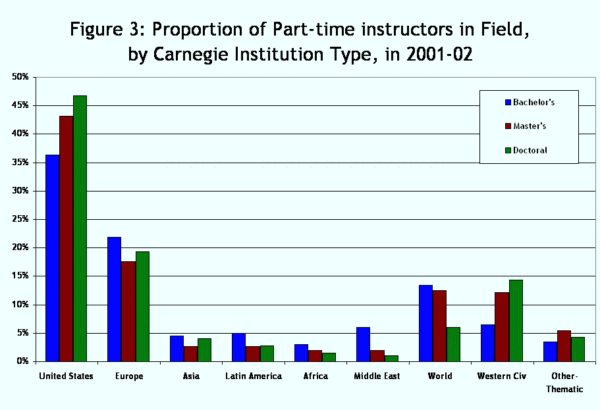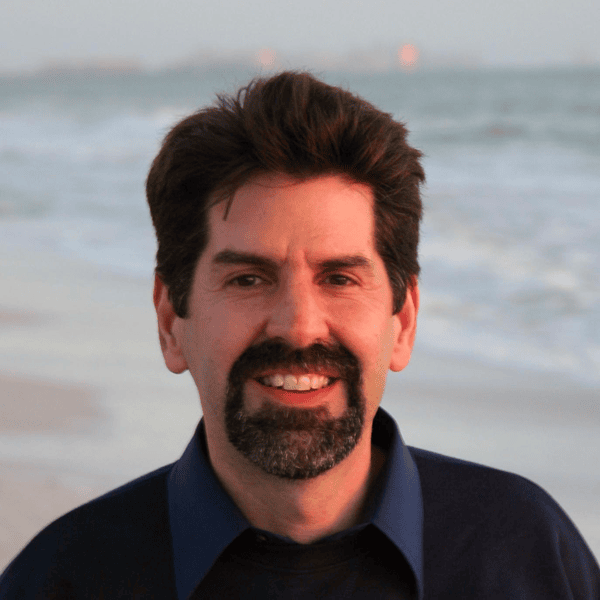The most recent survey of history departments, covering the 2001-02 academic year, highlights some conflicting trends in history departments.1 On the one hand, the responding departments report a net increase in the number of full-time history faculty employed at their institutions. On the other hand, the number of part-time faculty also increased.
The number of full-time faculty leaving their departments declined slightly in 2001-02, to 4.2 percent of the full-time faculty from an even 5 percent of the faculty the year before. It is important to note that not all of those leaving the departments were retiring from teaching. Just under half of the departing faculty retired from teaching, while over a third of the faculty left their departments to take up employment somewhere else.
Although the pace of retirements seemed to slow a bit, hiring did not decrease commensurately; responding departments reported a net growth in the number of full-time faculty hired. While 285 full-time faculty moved away from their departments, the departments reported hiring 335 “permanent” full-time faculty, and another 112 “temporary” full-time faculty. This bears out findings in recent surveys of faculty listed in the Directory, which also noted a net growth in the number of full-time faculty.2
These changes were remarkably consistent across a range of regions and institution types. Only programs at comprehensive master’s level programs and programs located in the West seemed to be doing more hiring than the average. The reason for this, as we noted in the earlier survey, seems to be linked to an increase in the number of students enrolling in history courses and majoring in the field (see related article on trends in the student population).
The large number of retirements and the increase in the hiring of junior faculty resulted in a slight decline in the proportion of faculty with tenure. Among the faculty who were eligible for tenure, the proportion of those who actually received it fell to 75.2 percent from 77.8 percent the year before.
At the same time, there was a small but notable increase in the proportion of part-time faculty employed. The proportion of part-time faculty rose to 28.6 percent of the faculty in the responding departments in 2001-02. This follows three years in which that proportion held steady at 26 percent.

Figure 1
It is instructive to note how different the composition of today’s history department is in comparison to that prevailing just 20 years ago. In a survey of departments conducted in 1981-82, the AHA found that part-time employees comprised just 5 percent of the faculty.3
To develop a more precise count of those teaching in the history classroom, graduate students serving as instructors and teaching assistants (TAs) were classified into a separate category in this survey (to avoid the statistical fuzziness caused in previous years by inclusion of some graduate student instructors in the category of part-time faculty). One of the more striking findings that emerged as a result of this classification was that programs in doctoral institutions tend to use graduate students for teaching where other programs use part-time, non-tenure-track faculty (see Figure 1). When they are included in the mix of instructional staff in the 2001-02 survey, TAs comprise 20 percent of those with some classroom responsibilities in history departments-and almost 1 out of every 3 in PhD-granting history programs. Of course, this only measures the number of individual instructors in the program, not the actual course loads of the faculty and graduate students.
Faculty in the Classroom
The average course load for full-time history faculty was just over 5 classes per year, compared to an average of 2.5 courses for part-time faculty. Baccalaureate institutions, which emphasize teaching over research, had the highest average course load for full-time faculty at 5.5 classes per faculty member per year. In contrast, full-time faculty at research institutions (classified by the Carnegie Foundation as “Doctoral/Research Universities”) taught an average of 4.0 classes per year.

Figure 2
Along with the heavier course loads, the baccalaureate programs had much smaller student-faculty ratios, with close to 1 faculty member for every 80 students enrolled in courses in the program. Programs in master’s colleges and universities had significantly higher ratios of 1 faculty member for every 140 enrolled undergraduate students, while doctoral /research universities had a 1 to 137 teacher-student ratio. When enrolled graduate students are included in the account, the ratios for both types of programs rise to 1 faculty member for every 144 students.
The survey also asked about the geographic field specializations of full- and part-time faculty. Of almost 9,500 faculty described in the surveys, it is hardly surprising that 3,708 (39.2 percent) were employed to teach U.S. history. European history followed at some distance, comprising another 26.3 percent of the course faculty. The remaining fields all accounted for less than 10 percent of the faculty. Western civilization and Asian history each comprised 6.6 percent of the faculty, world history (5.8 percent), Latin America (5.3 percent), Africa (3.1 percent), other thematic courses (4.3 percent), and the Middle East (2.7 percent).
However, there are significant differences in the proportions of full- and part-time faculty, as part-time faculty and graduate instructors were more likely to be found among those hired to teach U.S. history or the world and Western Civ courses (Figure 2). In comparison, almost two-thirds of the faculty teaching European, Asian, and Latin American history were employed full time.

Figure 3
These differences are particularly notable when we classify the faculty by the types of institutions (Figure 3). As we noted in an earlier survey, part-time faculty are typically hired to teach introductory level courses. So the faculty hired to teach world and Western civ courses are heavily represented in all program types.
But at baccalaureate programs, teachers of U.S. history are more likely to teach both introductory and upper-level courses, so the proportion of part-timers in that area is commensurately smaller. However, their small program sizes (averaging only eight faculty per department) make it harder to hire specialists in smaller fields, so one sees a disproportionate number of part-time faculty hired in Middle East history-typically local experts who can fill in on a subject that has lately gained increased relevance.
In the larger programs at comprehensive and doctoral/research programs, they can afford to specialize to a much greater degree and thus one sees departments shoving off the large survey classes in fields like U.S. history. As a result more than one-third of the faculty teaching those courses are only employed part-time.
A large number of programs lack faculty specializing in major regions of the world outside North America. More than 23 percent of the departments lack a specialist in Asian history, while 25 percent of the programs lack a specialist in Latin America, 48 percent don’t have an Africanist, and 58 percent of the programs don’t have anyone specializing in the Middle East. Only the field of Latin American history showed a statistically significant increase over the previous two surveys (where almost 30 percent of the programs reported an absence of specialists).
Departments without a specialist in a particular field often rely on faculty with other primary specializations to provide some coverage. Even so, 21 percent of the programs did not offer a course in Asian history, 31 percent offered no courses in Latin American history, 40 percent had nothing in African history, and 50 percent had nothing on the history of the Middle East (see related article on trends in the student population).
Liz Townsend and Katherine Hijar assisted with the tabulation of data for this report.
Notes
- The survey asked for information about the 2001–02 academic year (September 1 to August 31), and received an exceptional response rate—432 of 616 U.S. departments that were listed in the 2002–03 edition of the Directory of History Departments, Historical Organizations, and Historians. While respondents to the survey formed a representative sample of departments in the Directory (with only a slight overrepresentation of departments at public institutions), the Directory itself is not a representative sample of the many different types of history departments and history faculties in higher education. Two-year colleges and programs where the history faculty is integrated into a multidisciplinary department (such as history, politics, and geography) are significantly underrepresented because they do not usually seek listings in the directory. The Directory includes only 7 AA-granting programs, even though the U.S. Department of Education reports 227 programs that confer AA degrees in the social sciences and history. Similarly, the Directory includes less than half of the reported number of programs conferring BA degrees in social sciences and history, though these programs do produce almost 90 percent of the history bachelor’s degrees in the country (as calculated from the Department of Education data for the 2000-01 academic year). The responding departments reported employing 9,255 faculty-a bit more than half of the history faculty teaching at two- and four-year colleges and universities in the United States, which we currently estimate at just under 17,800 employed. [↩]
- See Robert B. Townsend, “History Jobs Take a Tumble, but the Number of PhDs also Falls,” Perspectives (December 2003), 7-11; Robert B. Townsend, “History Job Market Report 2002: Gains Despite Poor Economy,” Perspectives (December 2002), 8–13, 30. [↩]
- Survey of the Historical Profession: Academia, 1981–82 (Washington, D.C.: American Historical Association, 1984). The earlier surveys made a better effort to be comprehensive, sending out a mailing to over 1,797 departments (but received responses from only 590 departments). The respondents to these earlier surveys had a significantly higher proportion of private institutions (54 percent in the 1982 survey compared to 44 percent in the present study) and a slightly larger number of programs conferring the associate’s degree (17 as opposed to 7 in the current survey). [↩]

